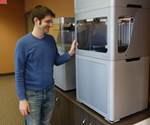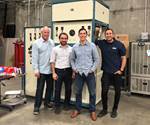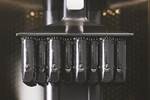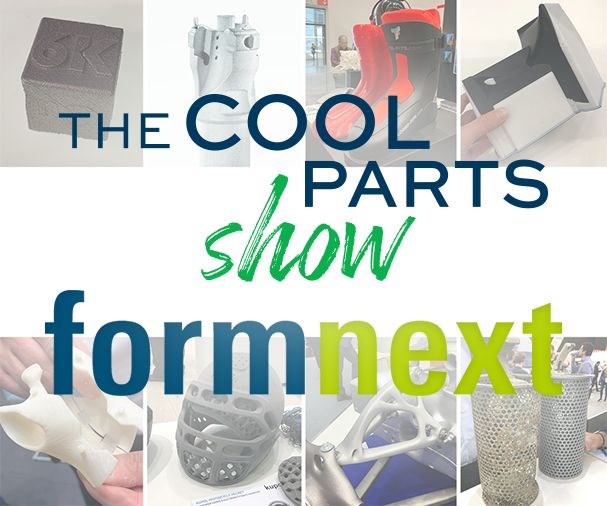"Stereolithography for Metals" Produces Detailed Parts
Lithography-based Metal Manufacturing (LMM), a new technique developed by Incus uses a curing process based on stereolithography to build green metal parts with photopolymer.
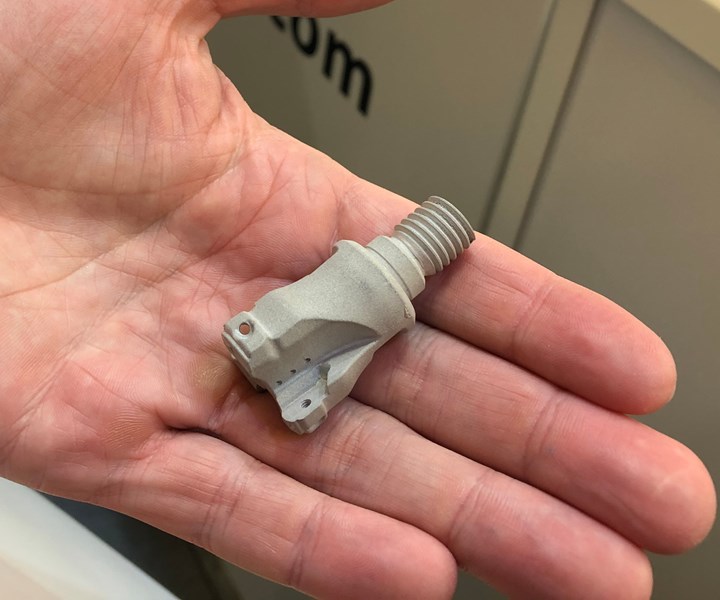
A new process developed by Incus promises the fine detail of stereolithography with any metal that can be sintered. (See this coolant-through cutting tool and more in our video roundup of “cool parts” from Formnext 2019.)
Stereolithography and similar resin-based 3D printing processes are known for building detailed, high-resolution parts in polymer. Now, Incus is leveraging many of the same benefits for metals, with a new process that combines photopolymer resin and metal powder.
Incus, a spinout from ceramics 3D printing company Lithoz, unveiled its Lithography-based Metal Manufacturing (LMM) process at Formnext 2019. Dr. Gerald Mitteramskogler, CEO, explained the process to me.
The key to LMM is its feedstock: photopolymer resin filled with metal powder. Unlike most SLA resins that are liquid during the printing process, this material remains solid but spreadable within the 20°C build chamber. “It’s a consistency like butter,” Mitteramskogler says.
A blade spreads the stock over a heated build plate. The photopolymer is cured with a digital light projection (DLP) engine to form each layer.
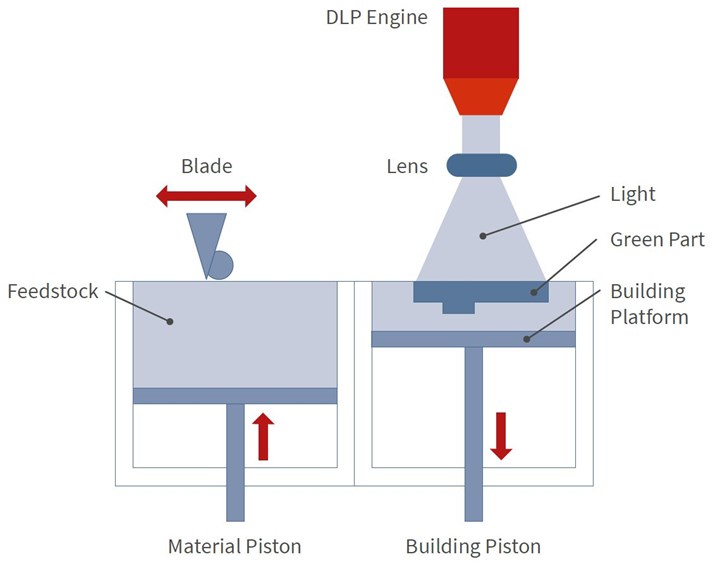
The spreadable feedstock is cured with light, similar to stereolithography, in a process that resembles powder bed fusion or binder jetting. Image: Incus
The polymerized green parts emerge from the printer in a block of material; an infrared light can be used to liquify the uncured material and quickly free them.
From there, the process looks more like binder jetting. Green polymerized parts are debound and sintered in a regular metal injection molding (MIM) furnace. The quality of LMM parts is similar to those made via MIM, with the benefits of the geometric freedom and speed enabled by 3D printing.

Similar to binder jetting, Lithography-Based Metal Manufacturing is suitable for small, finely detailed parts such as dental brackets, hinges for glasses, jewelry and watch faces like the one shown here.
Incus currently has four beta printers in the field, printing with 316L stainless steel. Additional materials are in development including titanium, tungsten, copper and precious metals. Lithography-based Metal Manufacturing is possible with any metal that is sinterable, Mitteramskogler says.
8 Cool Parts from Formnext 2019
Editors Peter Zelinski and Stephanie Hendrixson round up some of the coolest parts they spotted at Formnext 2019. See the cutting tool pictured above and more in this special edition of The Cool Parts Show. WATCH
Related Content
-
Is Automation More Effective Than Size for Serial Production 3D Printing?
Micro Factory has developed an mSLA system that incorporates cleaning, curing and part ejection, not to mention 100 empty build plates, into the frame of a desktop machine. The result is a small unit for large-scale production.
-
Intrepid Automation: How Investment Casting Benefits From High Speed DLP
Vat polymerization 3D printing for investment casting patterns offers a way to deliver design freedom at production speed.
-
Why Customization at Mass-Market Scale Is Finally Possible With 3D Printing
Printer speed and materials coupled with scanning technologies are contributing to more affordable and accessible 3D printed, personalized goods.

.jpg;width=70;height=70;mode=crop)
